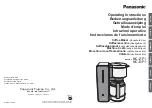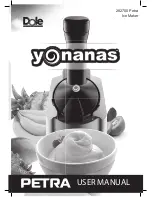
20
3. Line Set Installation
WARNING
• R-404A itself is not flammable at atmospheric pressure and temperatures up to
176°F (80°C).
• R-404A itself is not explosive or poisonous. However, when exposed to high
temperatures (open flames), R-404A can be decomposed to form hydrofluoric
acid and carbonyl fluoride both of which are hazardous.
• Do not use silver alloy or copper alloy containing arsenic.
• Do not open any service valve until the line set installation is complete and leak
tested.
• Ensure that there are no unnecessary traps and no kinks in the line set.
• Do not coil extra line set.
• Use an electronic leak detector or soap bubbles to check for leaks. Add a trace of
refrigerant to the line set tubing through the service valve access ports (if using
an electronic leak detector), and then raise the pressure using nitrogen gas (140
PSIG). Do not use R-404A as a mixture with pressurized air for leak testing.
1) Route the appropriate size copper tubing. Insulate the copper tubes separately. Leave a
service loop behind the icemaker to allow the icemaker to be pulled out for service.
See Fig. 14. Note: The service loop is not considered an oil trap.
2) Remove any extra line set length.
3) Choose the icemaker/line set configuration (top access or rear access). Use elbows
as necessary. When using the top access holes, move the access covers to the rear
access holes. See Fig. 14.
4)
NOTICE!
Before brazing, remove the Schrader valve cores from the service valve
access ports. When brazing, protect the service valve by using a wet cloth to
prevent the service valve from overheating.
5) Braze the line set to the icemaker service valves first, then to the remote condensing
unit service valves.
6) Allow the service valves to cool, then replace the Schrader valve cores.
7) Use an electronic leak detector or soap bubbles to check for leaks. Add a trace of
refrigerant to the line set tubing through the service valve access ports (if using an
electronic leak detector), and then raise the pressure using nitrogen gas (140 PSIG).
WARNING! Do not use R-404A as a mixture with pressurized air for leak testing
.
8) Attach the gauge manifold hoses to the service valve access ports and evacuate the
line set tubing. Allow the vacuum pump to pull down to a 29.9" Hg vacuum. Evacuating
period depends on pump capacity. Next, charge each line set tube with R-404A vapor
to a pressure of 15 to 30 PSIG.
9) Close both gauge manifold valves.
10) Disconnect the gauge manifold hoses.
11) Replace the access port caps and tighten.
















































